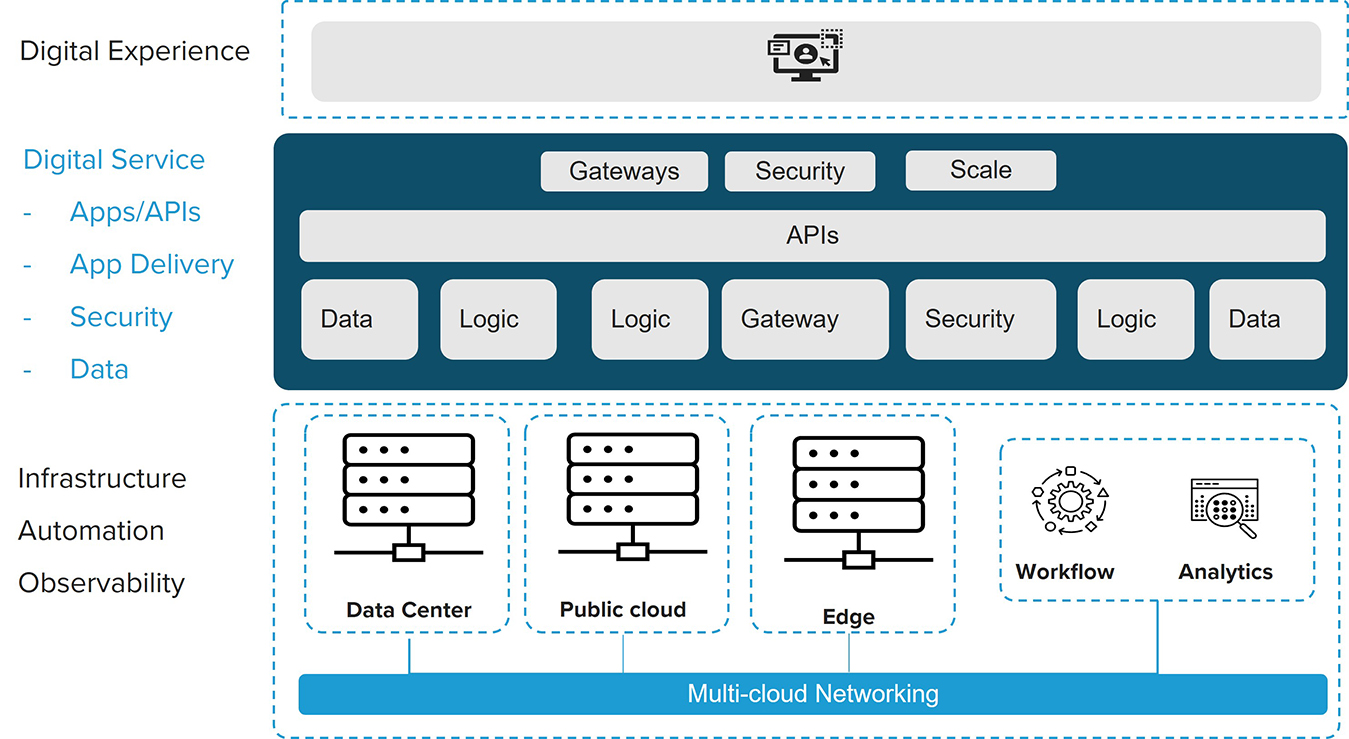What is a Digital Service?
It’s that time of year again. No, not just the pre-Christmas season. That’s here, too, but what I’m talking about is the analysis of our annual survey, The State of Application Strategy.
One of the big themes you’ll see when the 2023 edition publishes is about digital services and the impact they have on just about everything. So, before we start talking about how digital services are influencing the deployment of applications, app delivery and security, and every other layer of the IT stack, I thought we should explain what that means, because it’s likely we aren’t talking about (completely) the same thing.
Because shopping is on my mind, let’s use that as a base for an example, shall we?
What is a Digital Service?
In the spirit of digital transformation—which is a business journey—a digital service is a business construct composed of apps, APIs, app delivery, security, data, and the service-level objectives that guide operations.

That’s right, it’s not actually just an app on the Internet or an app hosted in a public cloud. It’s a business construct requiring a complex set of tools and technologies that offers a digital experience through which a consumer can engage with you to accomplish a thing.
If you’ve ever done any grocery shopping, then you know that the experience can be degraded by getting a cart with a bad wheel, or finding too many people in an aisle, or needing that box of gluten-free tagliatelle and discovering it’s out of stock and you’ll have to get penne instead. Oh, the horror! And that’s just the shopping part. The checkout process is also a significant factor in the overall satisfaction with the experience. Long lines, malfunctioning scanners, or slow cashiers can degrade the experience.
And then there’s the paying for the groceries. If the POS terminal is flaky or a connection to your bank is wonky, well, your experience isn’t going to be the best, is it?
It turns out the “shopping experience” is actually comprised of a whole lot of smaller “experiences” that are affected by factors not directly related to shopping itself, but rather the processes and overall flow that actually make up what we call “shopping.”
The same is true for digital services. Digital services are a business construct, defined by a set of processes and flows that combine in a way that allows consumers to engage with some entity, like a business. “Online shopping” is a digital service, and thus the experience you have while engaged with that service is what becomes the digital experience.
The digital experience, like its real-world equivalent, is shaped by factors that are not just about the interface, but about performance, security, and availability of all the composite processes that make up the overall service. In a modern, mature digital business, service-level objectives (SLOs) specify expectations about the experience, which gives operations—typically SREs—the ability to monitor and automatically adjust the technical components responsible for scale and performance (app delivery and security) to meet those expectations.
| Shopping Experience Factors | Business Expectation | Digital Experience Factors |
| The ‘bad wheel’ on a cart | Performance | The memory leak in a service |
| A confusing maze of aisles | Navigation | Poorly designed user interface |
| Ink tags | Security | CAPTCHAs |
| Low cashier to customer ratio | Availability | Service time outs |
These factors cross “processes”—from shopping to checkout to payment—but any one of them can impact the overall experience. Because we don’t view them as separate, they are all part of the same experience.
This is also true for digital, where multiple apps may represent different processes within the same experience and a ‘bad’ experience with any one of them will ruin the whole thing.
The Role of App Delivery and Security
If you refer back to the digital service diagram, you’ll note a couple of interesting things.
First, data is included as a first-class citizen, alongside logic. Thus far, whether apps are traditional (client-server, three-tier web) or modern (microservices, mobile), data has always existed as a separate—and usually ‘third’—tier within app architecture patterns.
This is changing. This is not the time to go into it, but trust me, emerging app architectures don’t have tiers and don’t require applications to intermediate between consumers and data. It’s like a whole new game.
Second, app delivery and security are also first-class citizens in a digital service. This is also new, because for most of this century, app delivery and security have been treated like ‘add-on’ afterthoughts. But when you’re defining a digital service, you can’t just specify experiential expectations with SLOs—how fast, how available, MTTR—without also being able to do something about it. This is the role of app delivery and security—to enable the adjustments and changes to a digital service that positively impact the digital experience. They are the control points through which adjustments are made to the performance, scale, and security of a digital service.
This is why we believe app delivery and security form its own discipline with its own set of tools, technologies, and practices. Because for a digital service, scale, security, and performance are no longer ‘nice to haves’ or merely operational concerns; they are business concerns that need to be addressed by the architectural building blocks organizations put into place to deliver the business construct that is a digital service.
But it’s not just app delivery and security that’s needed to deliver and support digital services. There are six key capabilities organizations need to acquire if they’re going to win in a digital world, of which app delivery is only one.
You can read about all six key capabilities a digital business needs in our book, Enterprise Architecture for Digital Business.
